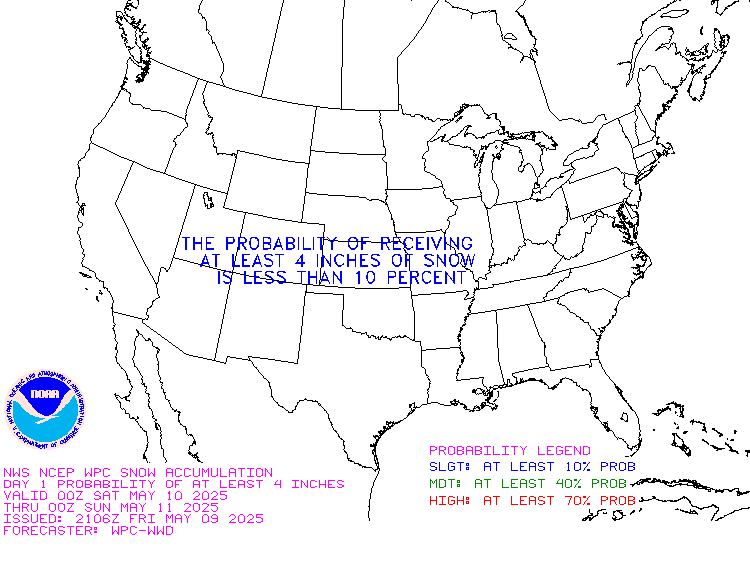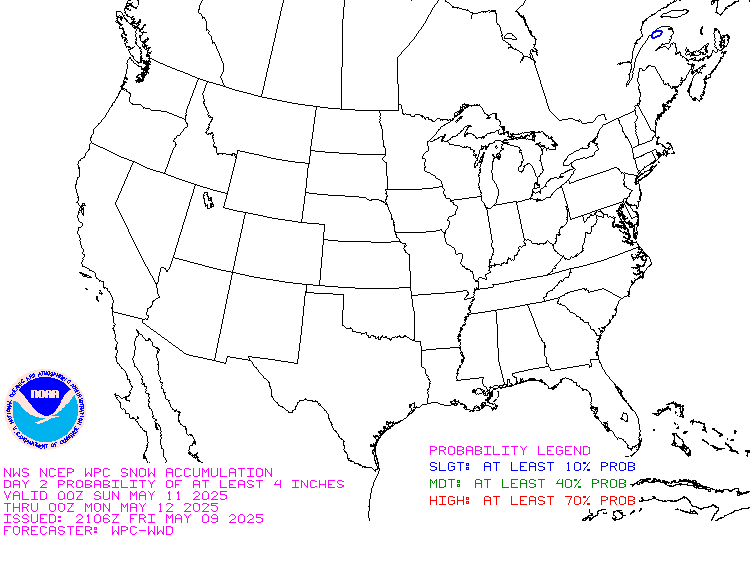It is difficult to find a more comprehensive Weather Outlook anywhere else with the ability to get a local 10-day Forecast also.
This article focuses on what we are paying attention to in the next 48 to 72 hours. The article also includes weather maps for longer-term U.S. outlooks and a six-day World weather outlook which can be very useful for travelers.
First the NWS Short Range Forecast. The afternoon NWS text update can be found here but it is unlikely to have changed very much. The images in this article automatically update.
Short Range Forecast Discussion
NWS Weather Prediction Center College Park MD
Sat Mar 16 2024
Valid 12Z Sat Mar 16 2024 – 12Z Mon Mar 18 2024…Heavy mountain snow impacts the Four Corners and Southern Rockies this
weekend……Severe thunderstorms and heavy rain possible across southern Texas and
along the Gulf Coast……Mild weather continues across the Pacific Northwest and East Coast…
The lingering closed upper low located over the Desert Southwest is
forecast to remain mostly stationary this weekend and produce the
continued threat of heavy mountain snow from the Four Corners region to
the Southern Rockies. In particular, the high terrain of central/southern
Utah as well as the San Juan and Sangre de Cristo Mountains of Colorado
and New Mexico can expect treacherous conditions due to heavy snow.
Additional snowfall accumulations over a foot are expected for parts of
the Southern Rockies through Monday, with Winter Storm Warnings and Winter
Weather Advisories remaining in effect.Meanwhile, a stalling cold front extending from the Southeast to southern
Texas will lead to at least a few more days of storminess for the Lone
Star State and remaining Gulf Coast region. The greatest severe weather
threat exists today across south-central Texas and the Middle Texas Coast,
where the Storm Prediction Center has highlighted a Slight Risk (level 2
of 5) for severe thunderstorms. Large hail, damaging winds, and isolated
tornadoes are possible within the strongest storms. Intense rainfall rates
falling over saturated ground may also lead to flash flooding and standing
water in urban areas throughout similar portions of Texas and stretching
into far southwest Louisiana. By Sunday, shower and thunderstorm activity
is expected to stretch along most of the Gulf Coast, with isolated to
scattered chances for severe weather and flash flooding. Given recent
rainfall, parts of southwest Louisiana and southeast Texas have been
designated as having a Slight Risk (level 2 of 4) for Excessive Rainfall.The other notable system to impact the CONUS through early next week is
forecast to clip the Great Lakes and northern New England, producing
mostly light rain and snow showers as well as gusty winds and cooler
temperatures. Locally heavy snow is possible downwind of the Great Lakes
on Sunday and Monday. Before the chilly and below average airmass
progresses into the eastern third of the Nation on Monday, mild afternoon
temperatures into the 60s and 70s can be expected this weekend in the
East. More importantly, the cold airmass on the way will contain a morning
frost/freeze threat on Monday throughout the Midwest and Ohio Valley as
lows dip into the 20s and 30s.Upper riding anchored over the Northwest will continue the warm and dry
pattern throughout the Pacific Northwest and northern Great Basin,
expanding into the northern High Plains on Monday. Highs into the 60s and
70s are forecast, which could break a few daily high temperature records.
To get your local forecast plus active alerts and warnings click HERE and enter your city, state or zip code.
Above is a 72 hour animation of the forecast. Learn about wave patterns HERE.
Then, looking at the world and of course, the U.S. shows here also. Today we are looking at precipitation.
Please click on “Read More” below to access the full Daily Report issued today.
| Notices: What would you like to learn about? Please provide that to me via the comment section at the end of the article. |
Now more detail on the 48-Hour Forecast (It is a 48 to 72 Hour Forecast actually)
Daily weather maps. The Day 1 map updates twice a day and the Day 2 and 3 maps update only once a day. These maps update automatically. But if that does not happen, you can get updates by clicking HERE
TODAY (or late in the day the evening/overnight map will appear) (Key to surface fronts shown on maps and you will then also be able to insert a city name or zip code and get a local NWS forecast).
TOMORROW
NEXT DAY
This animation shows how things may play out over the next 60 hours. To update click here.
The NWS Climate Prediction Center’s: Watches, Warnings, and Advisories plus other information can be found HERE. We post at least one of those updates daily, sometimes both. The Highlights are shown in the lede paragraph of this article.
ATMOSPHERIC RIVERS
This tells us what is approaching the West Coast. Click HERE to update If I have not gotten around to doing the update. Here is some useful information about Atmospheric Rivers.
Below is the current five-day cumulative forecast of precipitation (Updates can be found HERE)
Ski SnowReports
New Feature – Ski Reports. It is difficult to find reports that auto-update on-screen (and they are very long) but these links will get you to them – If you have additional suggestions make them in the comments section after every Econcurrents Article and we may add those links. We will try to not have too much overlap as that can add to the confusion.
Snow Forecasts. And remember this shows natural snow. Ski resorts also make their own snow.
Day 1

Day 2

Additional snow information can be found here, here, here, and here. The second link provides animations.
Now we look at Intermediate-Term “Outlook” maps for three time periods. Days 6 – 10, Days 8 – 14, and Weeks 3 and 4. An outlook differs from a forecast based on how NOAA uses these terms in that an “outlook” presents information as deviation from normal and the likelihood of these deviations.
Below are the links to obtain updates and additional information. They are particularly useful if you happen to be reading this article significantly later than when it was published. I always try to provide readers with the source of the information in my articles. These links may also be useful for those viewing this article on a cell phone or other small screen.
| Days 6 – 10 (shown in Row 1) | Days 8 – 14 (Shown in Row 2) | Weeks 3 and 4 (Shown in Row 3 but updates only on Fridays) |
| https://www.cpc.ncep.noaa. gov/products/predictions/610day/ | https://www.cpc.ncep .noaa.gov/products/predictions/814day/ | https://www.cpc.ncep.noaa.gov/products/predictions/WK34/ |
Showing the actual maps. They should now update automatically. The Week 3 – 4 Outlook only updates on Fridays. So below is what I call the Intermediate-term outlook. On Fridays, it extends out 28 Days. That declines day by day so on Thursday it only looks out 22 days until the next day when the Week 3 – 4 Outlook is updated and this extends the outlook by one additional week.
| 6–
10
|
|
|
| 8–
14 |
|
|
| 3–
4 |
|
|
HAZARDS OUTLOOKS
Click here for the latest complete Day 3 -7 Hazards forecast which updates only on weekdays. Once a week probably Monday or Tuesday I will update the images. I provided the link for readers to get daily updates on weekdays. Use your own judgment to decide if you need to update these images. I update almost all the images Friday Night for the weekend edition of this Weather Report. So normally readers do not need to update these images but if the weather is changing quickly you may want to.
Temperature month to date can be found at https://hprcc.unl.edu/products/maps/acis/MonthTDeptUS.png
Precipitation month to date can be found at https://hprcc.unl.edu/products/maps/acis /MonthPNormUS.png
World Forecast [that website is has been intermittent so be patient]
Below are the Day 1 -3 and 4-6 forecasts for temperature and precipitation. Updates and much additional information can be obtained HERE
World Temperature Anomalies
World Accumulated Precipitation
This information is provided by the University of Maine. They draw upon many different sources. There is a lot of information available at the link provided. I have just provided two useful forecasts. There are probably over a hundred different forecasts available from this source.
Worldwide Tropical Forecast (This is a NOAA Product)
This graphic updates on Tuesdays) If it has not been updated, you can get the update by clicking here Readers will only have to do that if they are reading this article much later than the date of it being published.
Information on Tropical Storms can be found HERE. Western Pacific information can be found HERE.
–
| I hope you found this article interesting and useful. |
–
